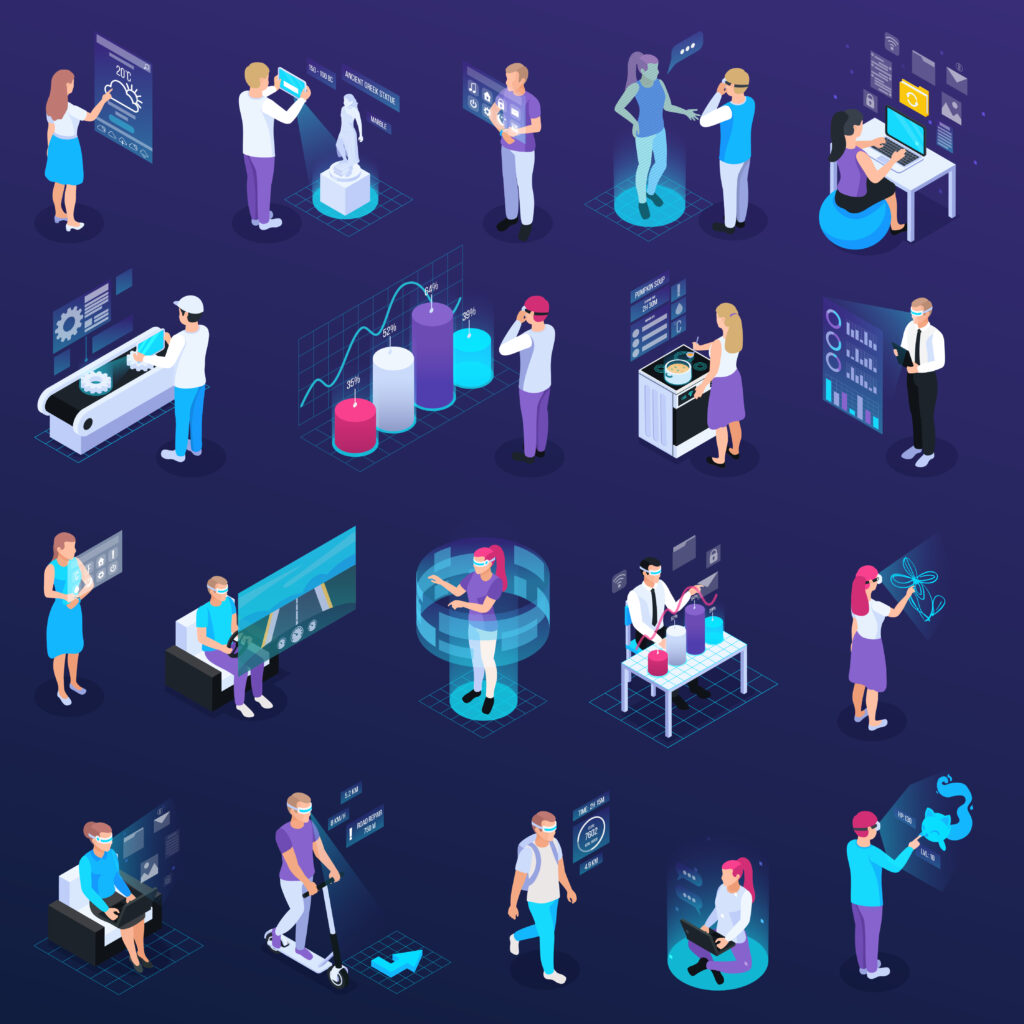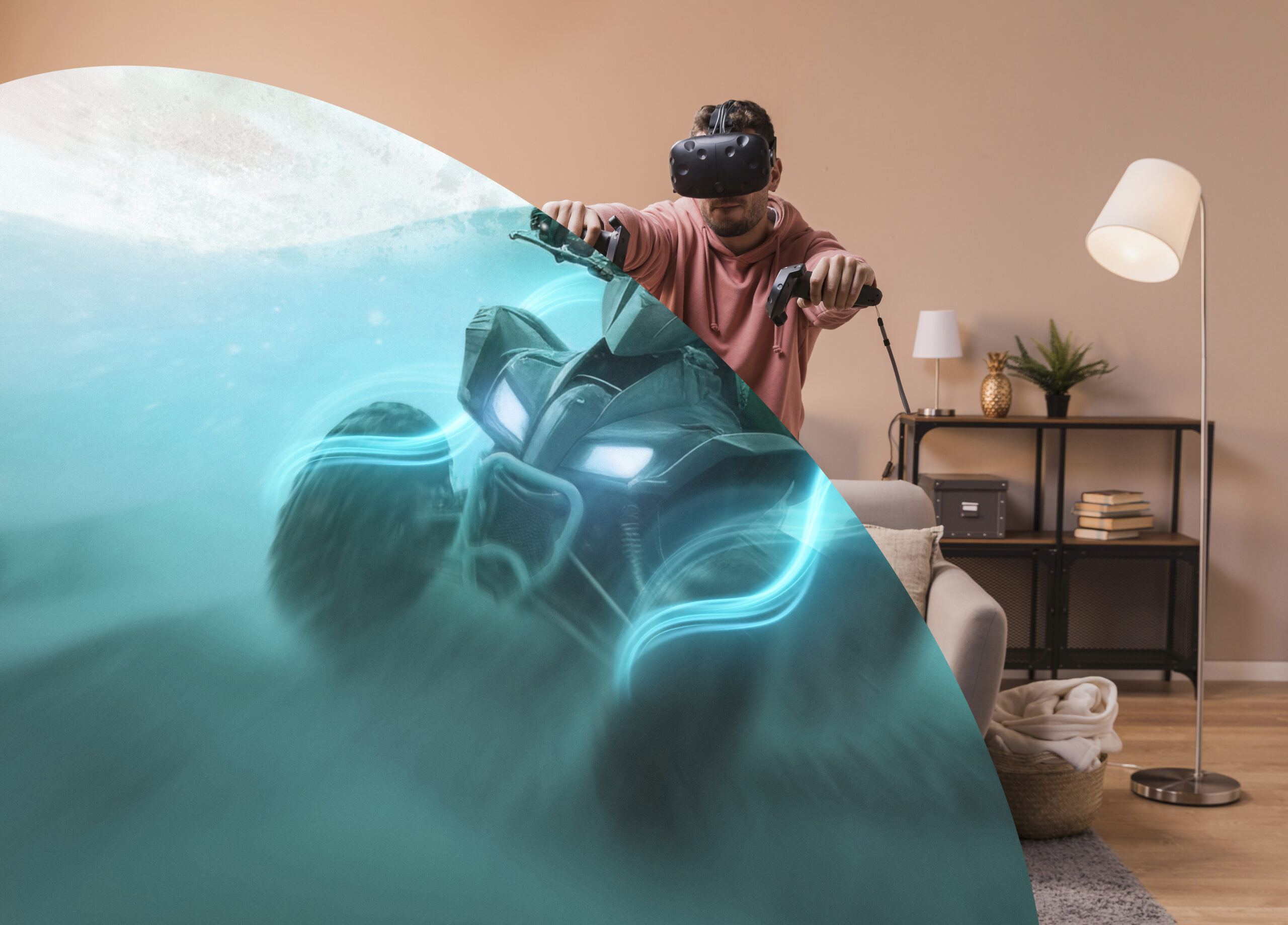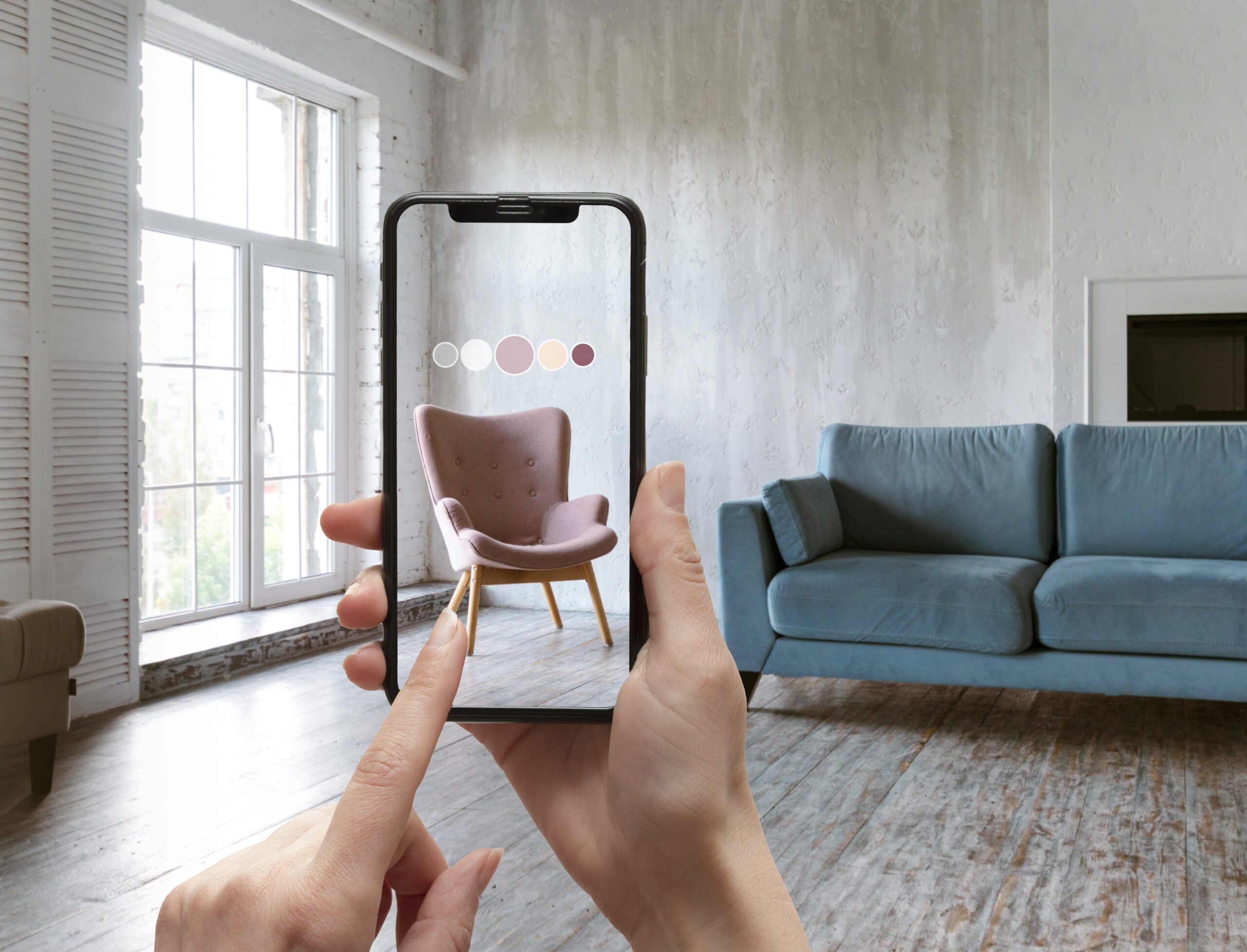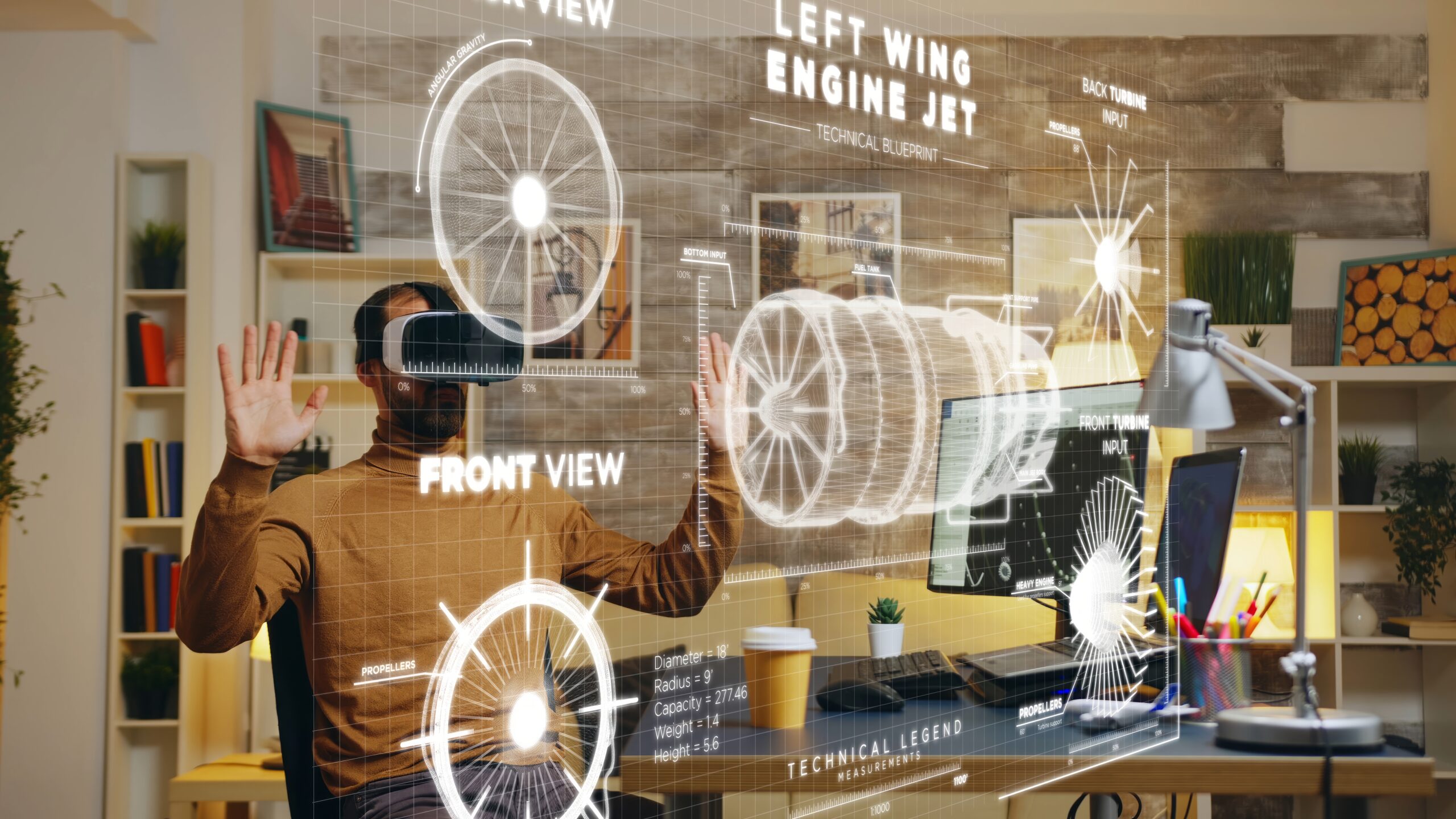It’s Augmented Reality (AR) and you didn’t know!
16Oct, 2023
5.59M

Angely Colmenares
Augmented reality (AR) is a technology that overlays digital information, such as virtual objects, graphics, or data, onto the real-world environment, enhancing the user’s perception and interaction with the surrounding world. Unlike virtual reality (VR), which creates a completely simulated environment, AR blends digital elements with the real world.
AR is typically experienced through devices such as smartphones, tablets, smart glasses, or headsets equipped with cameras and sensors. These devices capture the real-world environment and display virtual content in real-time, seamlessly integrating it into the user’s view.

Main types of Augmented Reality
1. Marker-based AR
This type of AR uses predefined markers, such as QR codes or visual patterns, to trigger the display of virtual content. When the device’s camera detects the marker, it overlays the corresponding digital content onto it. This can include 3D models, videos, or interactive elements.
2. Markerless AR
Also known as location-based or position-based AR, this type of AR uses the device’s sensors, such as GPS, compass, and accelerometer, to determine the user’s position and orientation in the real world. It then overlays virtual content onto the user’s view based on this information. Markerless AR is commonly used for navigation, location-based information, and geolocation-based gaming.
Augmented Reality Examples
AR has a wide range of applications across various industries. Some common augmented reality examples include:

– Mobile Applications:
Many mobile applications utilize augmented reality to offer interactive experiences. For example, gaming apps, shopping apps that allow virtual product try-on in your home before purchase, navigation apps that overlay real-time information about points of interest, among others.
Snapchat
The social media app Snapchat uses augmented reality filters and effects to add interactive and fun elements to photos and videos. You can apply animated masks, augmented reality lenses, and special effects in real-time.
Instagram
Instagram has incorporated augmented reality features into its platform, such as filters and effects to add virtual elements to photos and videos. These AR effects can range from masks and facial effects to decorative elements and visual styles.
Google Translate
The Google Translate app utilizes augmented reality to translate text in real-time when the phone’s camera is pointed at text in another language. This allows for instant and visually overlaid translation on the screen.
These are just a few well-known examples of mobile applications that use augmented reality. However, there are many other applications available across different industries, including gaming, shopping, navigation, entertainment, education, and more. The popularity and adoption of augmented reality continue to grow, and we are likely to see more mobile applications leveraging this technology in the future.

– Gaming:
AR games allow users to interact with virtual objects and characters in the real world. Pokémon Go is a popular example of an AR game.
Augmented reality in Pokémon GO refers to the technology that allows players to interact with virtual Pokémon characters in the real world. In the game, the Pokémon are superimposed onto the player’s live camera view, creating the illusion that the creatures exist in the actual environment. This immersive augmented reality experience enables players to capture, battle, and train Pokémon as if they were truly present in their surroundings. By utilizing the device’s GPS and camera functionalities, Pokémon GO merges the virtual world with reality, encouraging players to explore their physical surroundings in search of Pokémon.

– Entertainment and Live Events:
Augmented reality has been used in concerts, shows, and live events to add virtual elements to the stage, such as visual effects, animated characters, or additional information to enhance the audience’s experience.
Augmented reality (AR) in concerts is used to provide immersive visual and sensory experiences to attendees. Here are some more specific examples of how augmented reality is applied in concerts:
1. Holograms and virtual characters
2. Visual effects and 3D visuals
3. Augmented reality in wearables
4. Virtual reality experiences
These are just a few examples of how augmented reality is applied in concerts. Augmented reality and virtual reality are revolutionizing the way concerts are enjoyed, creating more immersive and exciting experiences for both artists and attendees.

– Education:
AR can enhance learning experiences by providing interactive and immersive visualizations of educational content, such as anatomy models or historical reconstructions.
Augmented reality (AR) in education refers to the integration of digital content and virtual elements into the learning environment to enhance educational experiences. By overlaying virtual information onto the real world, AR provides interactive and immersive learning opportunities for students.

– Marketing and Advertising:
AR enables brands to create engaging and interactive campaigns by overlaying virtual content onto real-world advertisements, billboards, or packaging.
Augmented reality (AR) has found a prominent place in the field of advertising and marketing. Companies use augmented reality to create interactive and engaging experiences for consumers. Here are some examples of how augmented reality is used in advertising and marketing:
1. Interactive Ads:
Print ads, posters, or billboards can integrate codes or markers that, when scanned with a specific mobile application, activate additional augmented reality content. This can include animations, videos, games, or additional information about the advertised product or service.
2. Virtual Try-Ons:
In the fashion and beauty industry, augmented reality is used to allow consumers to virtually try on products before purchasing. For example, virtual makeup applications overlay different shades of makeup on the user’s face, or virtual dressing applications allow users to see how they would look in different garments.
3. Immersive Shopping Experiences:
Augmented reality is used in shopping apps to provide users with a more immersive and personalized shopping experience. For example, some furniture brands allow users to see how furniture would look in their home by overlaying 3D models in the real environment through the device’s camera.
4. Interactive Catalogs and Brochures:
Printed catalogs and brochures can incorporate augmented reality functionalities. By scanning specific images or pages with a mobile app, interactive experiences can be triggered, such as explanatory videos, 3D models, or additional product information.
5. Events and Brand Activations:
Augmented reality is used in events and brand activations to attract attendees’ attention and create memorable experiences. Custom AR games, augmented reality filters, interactive scenarios, or virtual displays can be created to captivate participants’ interest and promote the brand in an innovative way.
Overall, augmented reality enhances the perception and interaction with the world by seamlessly blending digital content with the real environment, opening up new possibilities for entertainment, education, commerce, and more.
Related Episodes
1.20 min
episode 02
The sweetest music this side of heaven
1.20 min
episode 02
The sweetest music this side of heaven
Support the show on Elecast
Enjoy listening to our podcast? Consider making a donation!

Leave a Reply